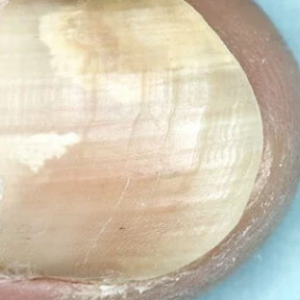
Dr. Kevin McKerrow
DERMATOLOGIST
+ SEE BIO
Fungal nail infections (onychomycosis), is a fungal infection of the nail bed under fingernails or toenails, and accounts for around 50% of all nail diseases. Around 10% of the population of New Zealand is affected. Because these infections develop slowly over time, they are often hard to detect early on.
Fungal nails often result from exposure to common areas such as swimming pools, public showers, gyms and nail spas. Tight fitting shoes, trauma to the nail, poor health, age and genetic susceptibility are also risk factors.
Caused by a fungus (rather than a bacteria or virus), it needs specific treatment, often requiring specialist care to achieve an optimal outcome.
Nail infections will not heal themselves. They will persist, potentially spreading and often acting as a “seed” for other common fungal infections like tinea or athlete’s foot. Over time, without treatment, fungal infections can cause nail destruction, body & skin rashes, and even gait (walking) and balance issues if big toes are involved.
Fungal nails present in one of several different patterns and may affect one or more toenails and fingernails.
Visible signs of infection include:
The correct diagnosis is imperative for fungal nails as other types of nail disorders can present with similar symptoms. The only way to be sure is to see a specialist who will take a scraping of the nail for laboratory analysis to determine what fungus you have. This is important because it determines the appropriate medication that should be used and an idea of how long it will take to treat.
The good news is that most nail infections can be treated and you will have your nail looking healthy again. Unfortunately, depending on the severity, it may take months to treat. Treatment at the Skin Specialist Centre is provided by our Dermatologists using a combination of medicines and lasers.
Our GenesisPlus laser (Nd:YAG 1064nm) treatment takes about 15 minutes per treatment and destroys the fungus. Typically, 1 - 5 treatments are required depending on the severity of the infection, with treatments performed about 4 - 6 weeks apart.
Our CO2 fractionated laser enhances the delivery of topical antifungal drugs to the nail bed by creating pin point holes in the nail plate. This allows for a better penetration of the topical medicines and will speed up the treatment time.
Laser therapy is particularly effective and is the recommended treatment method here at the Skin Specialist Centre. A prerequisite to treatment is a consultation with our Dermatologist who will discuss a treatment plan with you.